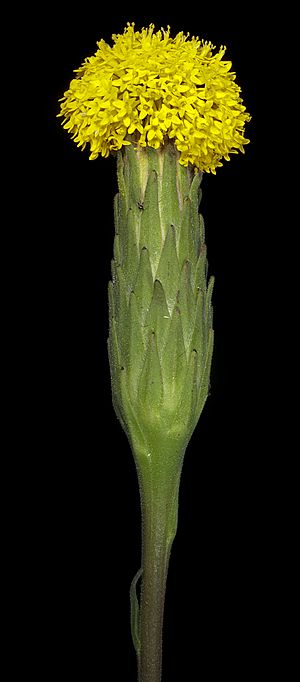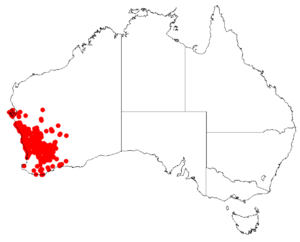Podotheca gnaphalioides facts for kids
Quick facts for kids Podotheca gnaphalioides |
|
|---|---|
 |
|
| Scientific classification | |
| Genus: |
Podotheca
|
| Species: |
gnaphalioides
|
 |
|
| Where it grows in Australia | |
| Synonyms | |
|
Lophoclinium citrinum Endl. |
|
The Podotheca gnaphalioides, also known as golden long-heads, is a small plant that grows for only one year. It belongs to the Asteraceae family, which includes daisies and sunflowers. This plant is special because it is endemic to Western Australia, meaning it naturally grows nowhere else in the world.
This herb can be quite small, growing from just 2 cm (about an inch) up to 60 cm (about two feet) tall. It often feels a bit sticky. You might see it standing straight up (erect) or lying along the ground (decumbent). Its bright yellow or orange-yellow flowers usually bloom between August and November. The golden long-heads plant can grow in different types of soil, but it especially likes sandy areas.
How it Got its Name
The golden long-heads plant was first officially described in 1845. A botanist named Robert Graham gave it the scientific name Podotheca gnaphalioides. When a plant is "described," it means a scientist has studied it carefully and written down all its features. This helps other scientists know exactly which plant they are talking about.

